Purulent discharge from the nose with an unpleasant odor. Green snot in a child - treatment without problems. Causes of purulent snot
Colds do not always go away quickly and without complications. Often purulent snot appears with it. If a person ignores a cold and goes to work despite a runny nose and fever, then ordinary rhinitis can turn into purulent.
Snot with pus is no longer a runny nose that will go away in a week. It is possible that this is already sinusitis, which must be carefully treated so that it does not become chronic.
Chronic sinusitis usually develops from acute form, especially if it is not completely healed. Beneficial factors for this are allergies to the neck and nose area, anatomical features, such as a crooked nasal septum or a weakened the immune system. If sinusitis spreads throughout paranasal sinuses, it's called pansinusitis.
Symptoms of sinusitis
When you have a cold, the mucous membrane in your nose swells, caused by viruses or bacteria. Due to the inflammatory stimulus, the goblet cells produce more mucus. As long as the secretion released here is still liquid, it can be depleted to some extent. However, if it becomes sticky, drainage is difficult, pathogens multiply more and then migrate into frontal sinuses.
Purulent rhinitis can occur in both adults and children. It is easy to distinguish it from a regular runny nose: it is characterized by discharge with the smell of pus; the color of the snot can be white, yellow or green.
If a person in this case does not consult a doctor and begin to receive proper treatment, the infection may spread to other organs. It is important to know that purulent rhinitis cannot be treated with heating under any circumstances; this can cause serious complications, including meningitis and a septic condition.
Common symptoms of a cold are cephalic and frontal sinusitis, which can be very severe, especially when bending over. Sometimes it feels in my head constant feeling pressure. The disease is often accompanied by pain in the upper jaw, with chewing often causing significant discomfort. Fever may occur, as well as poor general state, dizziness and hearing loss. In some cases, even taste and smell are affected.
Sinusitis in children
Chronic forms usually do not contain fever. However, sufferers suffer from constant clogged nose and pressure in the head area. Inflammation of the frontal sinus causes severe headaches. The paranasal sinuses are not developed in infants. Present at birth maxillary sinuses and ethnoid cells. During childhood, the sphenoid sinuses and frontal sinuses develop.
Phases of a runny nose
Many people believe that snot is pus itself, but this is not true. Snot is 95% water, 1% salt and 3% mucin protein. In addition, the snot may not contain a large number of nucleic acids and epithelial cells. It is the mucin protein that gives snot its viscosity and thickness. This protein is an excellent bactericidal agent and effectively helps fight infection.
Sinusitis usually occurs only from the age of eight. Symptoms include runny nose, sore throat, pressure and pain in the eyes and temples. This is often accompanied by a cough caused by constant mucus, which is located along the wall of the pharynx. The pain is aggravated by coughing, blowing and bending over.
Causes of inflamed frontal sinuses
As a rule, all sinuses should be well ventilated. This is not the case with inflammation of the frontal sinus. Swelling of the mucous membranes can prevent the secretion of secretions, with normal cold usually ending after a few days. If the inflammation does not stop, pathogens multiply, in this case mainly bacteria. Pathogens continue to migrate into the frontal sinuses and can also cause infection. So here's a lingering, uncured cold reason sinusitis.
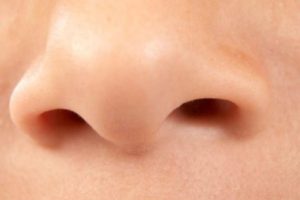 Mucin is produced constantly, regardless of the presence or absence of a cold. In the nose healthy person There is always a certain amount of snot that wets the nasal mucosa. This lubricant prevents bacteria and dust from entering the body. When the air contains a large amount of moisture, mucin begins to be produced in contact with it. more, that's why snot starts flowing in the cold.
Mucin is produced constantly, regardless of the presence or absence of a cold. In the nose healthy person There is always a certain amount of snot that wets the nasal mucosa. This lubricant prevents bacteria and dust from entering the body. When the air contains a large amount of moisture, mucin begins to be produced in contact with it. more, that's why snot starts flowing in the cold.
How to get rid of green snot
Other possible causes of sinusitis are allergies, a crooked nasal septum, lymphatic proliferation, or even recurrent periodontal inflammation. A cold that has been present for a long time, viscous discharge, headache and directs suspicion towards frontal sinusitis. When the forehead is touched, most sufferers react, and slouching also causes a feeling of pressure in the head.
A swab, which removes some of the nasal secretions with a cotton swab, helps the lab detect which bacteria are the culprits. After this, the choice of antibiotic depends. If treatment does not give the desired result, rhinografting usually begins. This is a nasal reflection procedure in which a flexible tube with a light source and camera is inserted into the nose and diseased mucous membranes can be viewed closely. With the help of rhinoscopy, narrowings, but tumors can also be detected.
Runny nose ( pathological discharge) has several phases:
- Dry rhinitis. The virus is already multiplying with might and main on the surface, but the mucous membrane is not yet secreting a secretion. Due to dryness, the receptors are irritated, the person sneezes and feels discomfort in the nose.
- A liquid and transparent secretion begins to stand out. It must fight viruses, moisturize the mucous membrane well and remove infectious particles from the body.
- Purulent rhinitis is a runny nose with purulent discharge. If a person good immunity, this secretion contains cells that fight infections. But if victory is on the side of infection, then pathogenic bacteria can be found in the snot.

This is an x-ray examination in which pictures of the affected area are taken. If the cause is an allergy, an allergy test, such as a penis test, is run to identify the allergen. As a rule, the patient must be taken care of - as if he had a cold. It is equally important to stay warm and avoid the cold. Even if the symptoms have already subsided and the affected person feels well, you should pay attention to suitable clothing such as a hat, headband and thick socks.
To bring the nasal mucosa to the decongestant, suitable nasal drops are prescribed. If bacteria are the cause of sinusitis, an antibiotic is the drug of choice. In addition, so-called mucolytics, which are drugs that thin out mucus, help. Daily inhalation is recommended for patients. Affected people are advised to consume sufficient fluids to prevent mucus mucus.
Causes of purulent snot
Purulent rhinitis does not occur on its own; it appears due to an acute inflammatory process. Also, the reasons for this phenomenon may be the following:
- complications after colds;
- complications after improper treatment of rhinitis;
- infectious or viral infection;
- prolonged hypothermia;
- getting into nasal cavity foreign body;
- work in hazardous production that involves inhaling harmful substances.
The following bacteria can cause snot in an adult and a runny nose in a child with purulent discharge:
Naturopathy for frontal sinusitis
IN in rare cases Surgery is required for recurrent or chronic inflammation. For example, if there is a massive curvature of the nasal septum or large nasal polyps. For uncomplicated illnesses, naturopathic treatment usually works quite well. But even with more severe sinus infections alternative methods treatments can be used simultaneously with a sedative traditional medicine and thus shorten the course of the disease.
Those affected recommend healthy, vitamin-rich diets and hydration in the form of water or tea. Enzymes are accelerators in a wide variety of metabolic processes in organism. They have antivirus and antibacterial properties. Pineapple, mango and papaya contain large amounts of these metabolic boosters. The beneficial effect of enzymes is known and thus they are administered in the form of tablets in the treatment of frontal sinusitis. Daily sea salt inhalation supports each therapy.
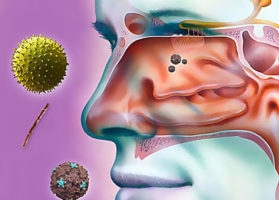
- fungal microflora;
- staphylococcus;
- streptococcus;
- Pneumococcus;
- anaerobic bacteria;
- Pseudomonas aeruginosa;
- mycoplasma.
A runny nose also occurs with pus due to a deviated nasal septum. A deformed septum prevents the normal outflow of snot from the nose, resulting in stagnation and a source of infection.
In addition, nasal drops based on sea salt are used. Chronic inflammation is treated in homeopathy with an individually selected constitutional remedy. Foot reflexology involves the entire body in treatment. So it worked here not symptomatically, but causally. Especially in chronic processes it is a beneficial naturopathic treatment.
Ear drainage is fluid that comes out of one or both ears. The consistency, color and smell may change and give the first indications of the cause of ear discharge. Possible reasons may be found in the middle ear, external auditory canal, or skull. Because of this, there are possibilities for treatment and examination, which leads to the ear coming out. Together with other complaints, the doctor receives a clear picture and can choose suitable treatment to avoid collateral damage.
Blood may be discharged from the nose along with pus. This may have the following reasons:
- blowing your nose too strongly and abruptly;
- various injuries to the nose, including simply picking the nose, can cause bloody snot;
- cysts or polyps in the nose;
- hormonal and cardiovascular pathologies;

Another cause of ear discharge may be mechanical damage ear canal or eardrum. In these cases, falls or impacts are usually responsible for the complaints. But even careless use of cotton swabs to clean your ears can cause injury.
Runny nose with pus: causes
Severe basal skull fracture injury can also cause ear prolapse. In addition, malformations of the eardrum that are congenital or develop as a result of chronic inflammation, can lead to ear leakage. Much less common causes of ear drainage can be tumors of the middle ear or ear canal.
- blood problems.
Symptoms of purulent rhinitis
Symptoms of a purulent runny nose can be different. Some patients lose their appetite and appear fast fatiguability. Others complain about unpleasant symptoms in the area between the eyebrows, many people experience headaches. There are also symptoms common to all: loss of smell, purulent viscous discharge, bad smell from the nose and mouth, low-grade fever.
In case of inflammation of the middle ear eardrum may break at an advanced stage. This often occurs before bloody or purulent discharge occurs. As soon as the discharge from the ear is chronic or is experienced as a serious irritation, a doctor should be consulted. In small quantities, discharge is a normal and natural process. There is no need to visit a doctor.
If it occurs in a manner that leaves his ears within a few hours, the doctor should begin further investigations and find the cause. If the color of the discharge changes or if the odor is perceived as unpleasant, you should consult a doctor. A pungent or pungent odor indicates further illness during inner ear.
Adults tolerate the symptoms of a purulent runny nose more easily than children. In addition, the child may develop sinusitis, otitis media, or inflammation of the adenoids. In children purulent runny nose may be accompanied by a temperature above 38ºC.
Unpleasant odor from the nose and profuse purulent discharge may indicate a rare, but dangerous disease- atrophic rhinitis.
A visit to the doctor is also necessary if shock consistency changes noticeably. IN normal conditions it's creamy so it's easy to remove. If it is liquid or extremely hard, the doctor will clarify the symptoms. If other symptoms such as ear pain occur, headache or hearing impairment, symptoms should be reported to a doctor. Swelling, severe itching, or redness are additional signs that there is a condition that needs to be examined by a doctor. In very rare cases, dizziness, nausea or fatigue may occur.
Atrophic rhinitis differs from the snot that appears during a common cold by the formation of hard crusts in the nasal cavity, which over the course of the disease can destroy not only the mucous membrane, but also bone tissue.
Symptoms of this disease are headaches and a strong foul odor from the nose, which the patient himself may not feel. This happens because with this disease, atrophy of the olfactory receptor occurs. Only a doctor can distinguish this runny nose from a purulent one.
Treatment of complicated runny nose
Here, only a doctor can find out through medical tests what a person lacks. Once the doctor has gathered initial information about the nature of the ear discharge and other symptoms, he can usually rule out many causes. It is also important to the physician whether the symptoms are acute, chronic, or recurring. This also leads to further investigation if necessary.
Typical drugs for treatment
Inflammation of the external auditory canal due to skin reaction is often accompanied by itching, swelling and redness and can be more easily determined by a doctor examining the ear. In acute bacterial infections, ear prolapse is usually greenish and unpleasant.
Diagnosis of pathology
In order for the treatment of purulent runny nose to be successful, it is necessary to conduct a study and find out what problem the patient is facing. In the case of ordinary rhinitis (without complications), the therapy will be the same, and it will be completely different for sinusitis or other diseases.
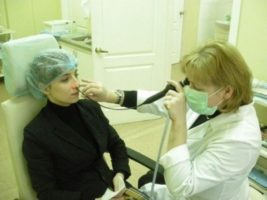 During a visit to the otolaryngologist, the patient should talk in detail about all the symptoms of a runny nose. Then rhinoscopy is performed and, if necessary, added additional research: X-ray, CT, blood and urine tests, culture of secretions, endoscopy.
During a visit to the otolaryngologist, the patient should talk in detail about all the symptoms of a runny nose. Then rhinoscopy is performed and, if necessary, added additional research: X-ray, CT, blood and urine tests, culture of secretions, endoscopy.
If a middle ear infection is not treated, the inflammation can spread to the surrounding bone. If the discharge from the ear bleeds, the doctor will need to rule out injury. Chronic drainage from the ear can, in turn, indicate possible ear malformations that are accompanied by hearing loss.
Ear discharge is perceived as unpleasant and irritating. Shame and constant control may begin. Because it can be hidden behind an ear infection, it is expected to impair hearing. Deafness can lead to interpersonal and social problems. Misunderstandings and conflicts are possible. If the outflow in the outer or middle ear area dries up, the recorded vibrations environment can no longer be transferred properly.
In the case of a child, it is more difficult to establish a clear picture because the child cannot correctly describe the symptoms. Therefore, in this case, bacterial seeding is done immediately.
If the patient experiences general intoxication of the body, this tells the doctor that the infection has already spread to the paranasal sinuses, but the final diagnosis can only be confirmed after X-rays and CT scans. Sinusitis is accompanied pain syndromes, and the stronger they are, the more difficult it is for the discharge to leave the inflamed cavity.
Thus, hearing is reduced and can lead to problems in Everyday life, for example, in motion. The patient usually suffers from other symptoms such as pressure in the ear, malaise, dizziness or fever. This is followed by problems with concentration or disturbances in consciousness. If ear loss is associated with a foul odor, feelings such as self-disgust or disgust may occur. The shock may cause a tingling sensation in the ear. The need for itching increases. When relieving itching, scratching runs the risk of penetrating deep into the ear and damaging it.
Treatment of a runny nose
How to cure a purulent runny nose is decided depending on the cause of its occurrence and the results of the bacteriological culture analysis. In adults, the therapy process most often begins with the doctor rinsing the patient’s nose with saline solutions or special medicines, which are based on sea salt. After rinsing, the swelling of the mucous membrane decreases, the discharge from the nose becomes more liquid, and the microbes die.
 If there is a purulent process, then saline solutions add antiseptics local action, which do not cause irritation of the mucous membrane, but are effective. These include Miramistin, Furacilin, Chlorhexidine. In some cases, hydrogen peroxide is used. As a rule, after rinsing the nose, the number pathogenic flora is reduced, the unpleasant odor disappears. Recovery soon follows.
If there is a purulent process, then saline solutions add antiseptics local action, which do not cause irritation of the mucous membrane, but are effective. These include Miramistin, Furacilin, Chlorhexidine. In some cases, hydrogen peroxide is used. As a rule, after rinsing the nose, the number pathogenic flora is reduced, the unpleasant odor disappears. Recovery soon follows.
With a diagnosis of “purulent runny nose” effective treatment impossible without vasoconstrictor drops. However, you need to know that such drops can be used for no longer than a week, otherwise addiction will develop. If vasoconstrictor drops did not have the desired effect, the doctor prescribes hormonal sprays, for example, Nasonex or Avamis. They are used when the swelling is too severe and normal fluid outflow is impossible. Sprays are prescribed along with antibacterial drugs, to bacterial infection did not become more active.
It is important to know how to treat purulent runny nose with complications. In this case, mucolytics are used. In case of complicated purulent process nasal discharge becomes very thick, practically does not leave, and crusts gradually form. Acetylcysteine is most often prescribed, which dilutes the purulent mass, and the patient can blow his nose.
A runny nose caused by bacteria is in any case treated with antibiotics; medications are generally prescribed penicillin group, for example, Amoxiclav. If you are intolerant to penicillin, you can use macrolides such as Azithromycin.
Folk remedies
Among folk remedies, several of the most effective can be identified. Recipes:
- Peel the onion and chop finely. Squeeze a little juice from this mass. Then mix 1 teaspoon of juice with 1 teaspoon peach oil. Four times a day, instill 3 drops into each nostril.
- Take 2 pieces of candied honey, put it in your nostrils (just not deep) and lie on your back. IN lying down remain until the honey begins to melt and flow into the nasopharynx. This procedure can be done 1-2 times a day for 3 days.
- St. John's wort treats a runny nose well. Need 1 tbsp. pour a spoonful of herbs into a glass of boiling water and leave for several hours, then strain and rinse your nose 2 times a day.

Prevention of purulent runny nose
To prevent a cured purulent runny nose from appearing with every cold or hypothermia, it is important to prevent it from becoming chronic. To do this, you need to completely cure the disease and carefully follow all the doctor’s recommendations.
You cannot self-medicate colds which are accompanied by a runny nose. It is not advisable to indiscriminately drip into your nose all the nasal products that are sold in pharmacies. You need to try to strengthen your immune system, take more walks fresh air, do physical education.
If you have a runny nose, it is not recommended to blow your nose very forcefully or, conversely, to forcefully draw in nasal discharge back. If you have a deviated nasal septum, it is recommended to consult a doctor about surgical correction of the pathology.
- Factors that contribute to the development of ozena
- Causes of foul-smelling runny nose
- Clinical manifestations of the disease
- Prevention of foul-smelling runny nose
- Treatment atrophic rhinitis
- How to rinse the nasal cavity correctly at home
- Simple ways
How to deal with stinky snot smelling rotten? This question worries patients with ozena, a fetid runny nose. This . , burning in the nasal cavity with rhinitis is familiar to many people. But ozena gives patients more serious problems. You will not be able to get rid of this unpleasant disease on your own. Only with the help of a specialist and persistent long-term treatment the patient can cope with this obsessive disease.
Factors that contribute to the development of ozena
Provoke the occurrence of pathology:
- Poor nutrition.
- Poor living conditions.
- Bad habits.
- A foul runny nose most often affects the fairer sex.
Return to contents
Causes of foul-smelling runny nose
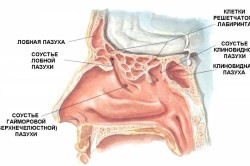 Medical science does not have an exact explanation for the etiology of atrophic rhinitis. There are many theories that try to explain the origin of this pathology.
Medical science does not have an exact explanation for the etiology of atrophic rhinitis. There are many theories that try to explain the origin of this pathology.
Proponents of the pathophysiological theory blame:
- Chronic nasopharyngeal infections.
- Injuries to the bones of the face and nose.
Experts, convinced of the unshakable arguments of the endocrine theory, believe that women during periods hormonal changes of the body, the foundations for violations of certain systems are laid. That is why representatives of the fair sex get sick with ozena more often.
The neurogenic theory is based on:
- Ideas about disruption of activities are laid down nervous system person.
- A foul runny nose is a consequence of dysfunction of this set of nerve structures.
Supporters of the anatomical theory consider the reasons for the development of ozena:
- The nasal cavities are very small.
- Excessively wide nose.
- Large volume of the facial part of the skull.
The hereditary theory substantiates the idea:

- A significant cause of the development of the disease is a hereditary factor.
- Under certain conditions, it becomes a trigger for the onset of the disease process.
Scientists who develop the infectious theory claim that the disease is caused by a variety of microbes and bacteria inhabiting the nasal cavity. The specific causative agent of the disease has not yet been named, but in 80% of patients with atrophic rhinitis, a study of the microflora revealed the bacterium klebsiella ozaenae.
The focal theory of the appearance of ozen explains:
- The development of the disease is due to changes that occur over time in the tissues of the paranasal sinuses.
- Doctors see many patients with chronic sinusitis subsequent development of atrophic rhinitis.
Return to contents
Clinical manifestations of the disease
With this disease:
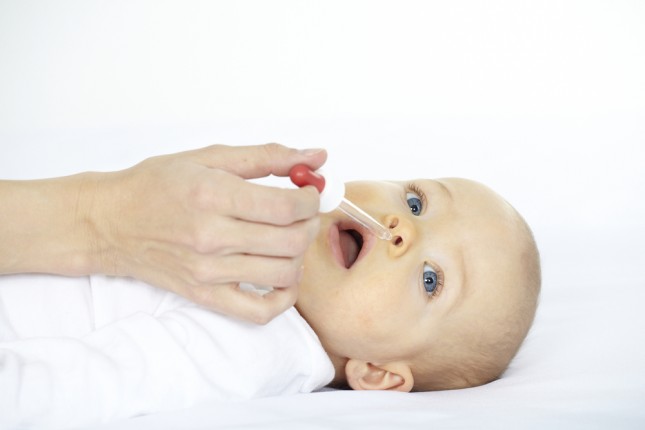
- Inflammation and damage to the nasal mucosa develops. Normally, it should be bright pink, but in patients with ozena it becomes pale.
- The mucous membrane of the nasal cavity atrophies, collapses, rots, and becomes dry.
- The vessels of the nasal mucosa become brittle and susceptible to infection.
- Mucus, which a person should normally have, is not produced.
- A pathological purulent secretion is produced, which quickly dries out and turns into numerous green crusts with a strong unpleasant odor, covering the nasal mucosa in a thick layer.
- Here an environment favorable for the habitat of colonies of numerous bacteria and microbes is formed. They settle in the atrophied nasal cavity and produce an aggressive stench - an unpleasant odor.
- Bleeding occurs frequently.
- A profuse green mucous discharge appears that smells like pus.
- Atrophy and decay of the bone walls, cartilage of the nasal cavity, nasal septum and turbinates develop.
- The fetid smell of rotting meat is characteristic, since destruction of all nasal tissues occurs.
- Since the olfactory receptors of the nose are affected, they nerve endings destroyed, patients lose their sense of smell and do not feel that their snot smells like pus. Only the people around you feel it.
- On late stages As the disease develops, the nasal septum and vessels are so damaged that nothing remains of the blood vessels.
- There is only rotting tissue here. The smell of rot is the smell of ozena. Severe damage to the nasal cavity occurs when human tissue actually rots.
This happens only to those patients who ignore the manifestations of the disease and do not go to the doctors.
Atrophic rhinitis in its development goes through three stages:

- Initial. Gradually develops in younger school age. Parents notice that their child constantly has discharge. He gets tired quickly, sleeps and eats poorly. The process intensifies in adolescence when nasal discharge takes on an unpleasant odor.
- The height of the disease. All the symptoms inherent in ozena are present. May develop various shapes atrophic rhinitis: local, one-sided, without crusts. Complications of this pathology often develop: inflammatory processes organs of vision, bronchopulmonary system, larynx, gastrointestinal tract, neuritis, meningitis.
- Final. At 40 years of age and older, patients often experience spontaneous recovery. The formation of fetid crusts in the nasal cavity stops. Unpleasant odor and copious discharge disappear. However, the consequences of atrophic processes are loss of smell and dryness of the mucous membranes in the nasal cavity.
Return to contents
Prevention of foul-smelling runny nose
Compliance with simple hygiene rules:
- Rinse the nasal cavity even with the most common runny nose.
- You need to be attentive to everyone clinical manifestations illness. You should consult a doctor in time, because an unpleasant odor indicates advanced pathological processes.
